
News, Insights, and more on Industrial IoT
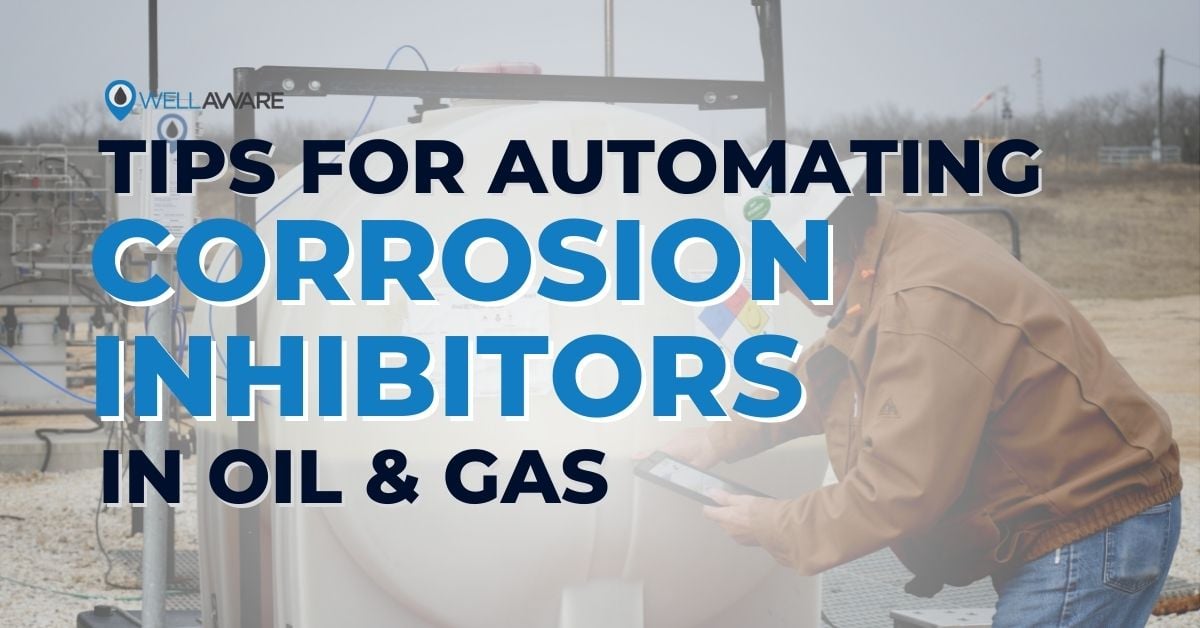 Corrosion inhibitors may be the single most important chemistry applied in the oil and gas industry. Used to protect wells, pipelines, tanks, compressors, and nearly every other kind of downhole or surface equipment, corrosion inhibitors are the backbone of a good asset integrity program designed to keep equipment failure rates at bay. Without corrosion inhibitors, oil and gas producers, transporters, and refiners would suffer tremendously.
Corrosion inhibitors may be the single most important chemistry applied in the oil and gas industry. Used to protect wells, pipelines, tanks, compressors, and nearly every other kind of downhole or surface equipment, corrosion inhibitors are the backbone of a good asset integrity program designed to keep equipment failure rates at bay. Without corrosion inhibitors, oil and gas producers, transporters, and refiners would suffer tremendously.
In this blog, we want to offer some helpful tips to oil and gas operators and service companies looking to automate corrosion inhibitor injection through tank level monitoring, pump control, or real-time PPM control.
First, a quick primer on the “what, when, and why” corrosion inhibitors are used in oil & gas. Want to skip ahead to the tips? Go right ahead by clicking here!
According to a recent study by the Association for Materials Protection and Performance (AMPP, previously NACE), corrosion is responsible for over $2.5 Trillion (with a “T”) of loss and damages each year to the global economy. For those keeping score, that’s 3.4% of global GDP.
This is simply astounding. Clearly, inhibiting corrosion is of utmost financial importance to global industry.
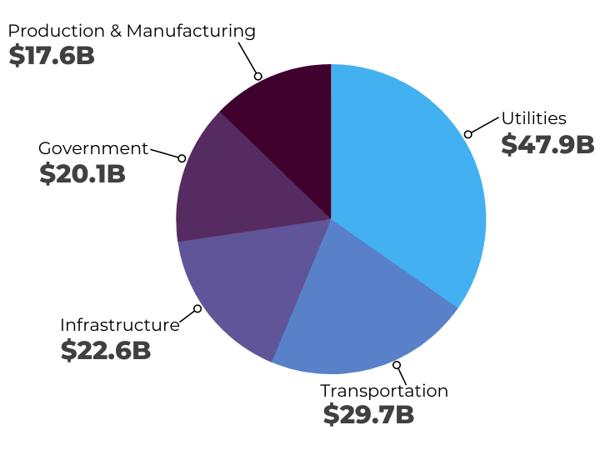
But what causes corrosion in oil and gas processes?
First, it’s helpful to address specifically what is corrosion in oil and gas. Put simply, corrosion is the process by which refined metals, like steel, undergo a chemical reaction that causes the chemical or electrochemical deterioration of the metal.
In oil and gas processes, corrosion of metal equipment typically occurs from one of the following processes
In many cases, corrosion inhibitors are used to prevent these types of corrosion in oil and gas processes.
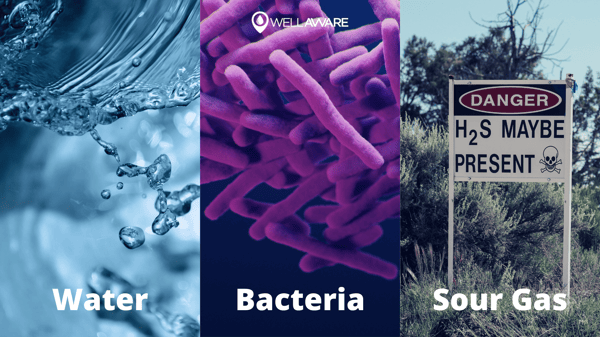
A corrosion inhibitor is a chemical compound designed to prevent or postpone the process of corrosion through physical or chemical means.
Corrosion inhibitors are used as a steady-state additive to oil and gas processes, meaning they are continually injected to prevent corrosion.
Corrosion inhibitors are just one way that the oil and gas industry combats corrosion. Other methods include cathodic protection, protective coatings, and appropriate material selection.
In the oil and gas industry, there are 3 main types of chemistries used to inhibit corrosion:
Film-forming corrosion inhibitors physically prevent corrosion by forming a film on the interior of a pipeline or vessel. This film repels water containing corrosive elements, preventing contact with the pipeline surface. There are many types of chemistries used in film-forming corrosion inhibitors, though azole and pyrimidine byproducts are often used. In certain cases, film-forming corrosion inhibitors can also be used to prevent the build-up of unwanted precipitates, such as scale, on pipeline internals. These are often called “mixed inhibitors” or “combination inhibitors.”
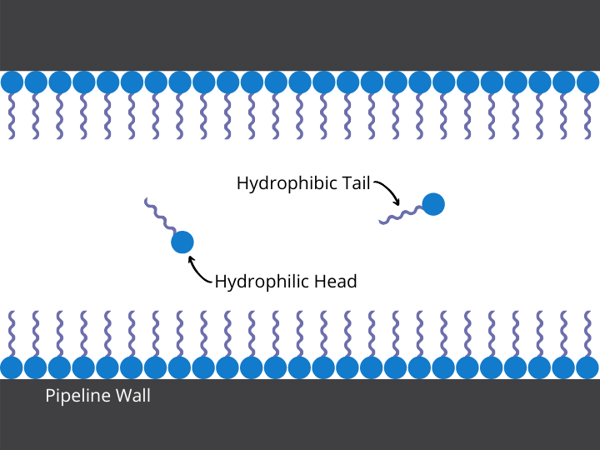
Gas scavengers, such as oxygen scavengers, carbon dioxide scavengers, and hydrogen sulfide scavengers, inhibit corrosion by chemical converting corrosive gases into non-corrosive materials through chemical interactions. These chemistries often contain triazine or various amines.
Biocides inhibit microbial-induced corrosion (MIC) by killing and preventing the formation of bacterial colonies. Glutaraldehyde is a common biocide used in the oil and gas industry.
These three types of corrosion inhibitors are injected into oil, water, and natural gas processes to prevent equipment, pipeline, and vessel corrosion.
The challenge, of course, is figuring out how much corrosion inhibitor to inject. Because many of these chemistries can create headaches for downstream processes and refining, it’s important to minimize chemical overuse. At the same time, under-injection puts assets at risk of failure.
As such, oil and gas operators and their service providers are looking for better ways to dial in injection rate calculations for corrosion inhibitors and automate treatment concentrations.
Because precise chemical injection of corrosion inhibitors is critical for cost reductions across all oil and gas processes, operators of all sizes should consider economic means of automating the injection of corrosion inhibitors.
Here are 3 useful tips for automating corrosion inhibitor injection in oil and gas processes.
One of the simplest ways to minimize the waste of corrosion inhibitors while maintaining acceptable asset integrity is to use data from a real-time flow meter to inform injection rates.
In most cases, film-forming inhibitors are injected at precise concentrations into a process based on known water cuts and impurity levels in that process. Assuming these percentages remain stable, a flow meter can inform the necessary volume of corrosion inhibitors based on a prescribed concentration.
This is especially useful in processes where flow rates fluctuate considerably day-to-day, such as in saltwater disposals or produced water transfer systems.
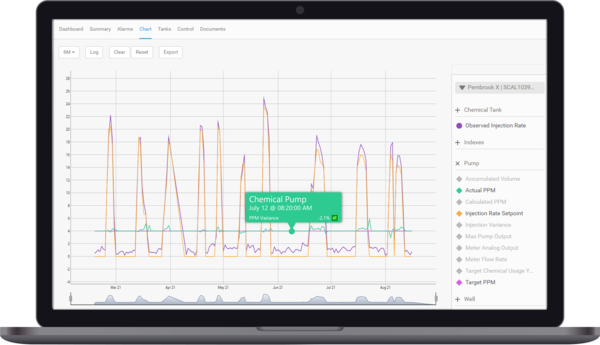 This chart demonstrates how WellAware On Demand Chemical automation maintains injection at the target concentration (5 PPM) by changing chemical pump setpoints (shown in orange) based on water flow meter readings.
This chart demonstrates how WellAware On Demand Chemical automation maintains injection at the target concentration (5 PPM) by changing chemical pump setpoints (shown in orange) based on water flow meter readings.
For example, if an operator wanted to inject a corrosion inhibitor at 20 parts per million (PPM) into a water pipeline, a flow meter could inform the injection volumes. If the water flowed at 25,000 BBL/D, then the operator should inject 21 GPD of corrosion inhibitor. If the water flow rate decreased to 10,000 BBL/D, a corrosion inhibitor injection rate of 8.4 GPD would suffice (math shown below).
Corrosion Inhibitor Rate = Concentration x Water Flow Rate x Conversion Factor
Corrosion Inhibitor Rate = 25 parts / 1,000,000 parts x 25,000 BBL/Day x 42 Gal/BBL
Corrosion Inhibitor Rate = 21 GPD
Corrosion Inhibitor Rate = Concentration *Water Flow Rate * Conversion Factor
Corrosion Inhibitor Rate =25 parts / 1,000,000 parts x 10,000 BBL/Day x 42 Gal/BBL
Corrosion Inhibitor Rate = 8.4 GPD
As you can see, there is a considerable financial and operational impact to updating corrosion inhibitor rates as often as possible using a flow meter. If the operator in the example above kept the injection rate at 21 GPD assuming a stable water flow rate of 25,000 BPD, but the average water flow rate was actually 15,000 BPD, this would result in over 250 gallons and about $2,500 in wasted chemical each month.
One of the most common ways to ensure proper treatment levels of film-forming inhibitors is to measure chemical residuals downstream. Measuring residuals involves sampling downstream fluids to detect concentrations of corrosion inhibitors in the process.
If corrosion inhibitors are being applied in appropriate concentrations, there should be some, though minimal, residual chemistry downstream. If no residuals are present, we might assume we aren’t getting complete protection. If we measure too many residuals, then we can assume we are over-treating.
Similar to residual measurement, companies should begin measuring actual corrosion in equipment downstream of corrosion inhibitor injection using corrosion probes. This process of “closing the loop” can, over time, show how effective corrosion inhibitors are at actually preventing corrosion.
The process of measuring corrosion can be challenging, of course. It can be difficult to know where to place the probes and when to take readings. In single applications, this may be of little use.
However, if the process is scaled across all operations, and data is routinely collected about injected concentrations, the type of chemistry used, and the prevalence of corrosion, meaningful trends can appear.
While measuring residuals and, to lesser extent corrosion, is relatively common practice in the oilfield, operators and service companies can take this a step further by building a contextualized database of treatment rates, flow rates, residuals measurements, corrosion measurements, and other process variables such as process quality, pressure, temperature, and more.
Over time, companies can use this data, applying advanced analytics or machine learning algorithms, to determine how various process variables influence corrosion inhibitor effectiveness, using these models to inform new treatment applications.
For any oil and gas operator or service provider keen on reducing the cost of corrosion and corrosion inhibitors, the above two methods can go a long way.
However, these two methods must be informed by accurate chemical usage data.
Too often, it is assumed that actual chemical dosage occurs at the prescribed rate. The after-the-fact analysis assumes that, if the pump was set to 15 GPD, then it injected 15 GPD over that time period.
In reality, this assumption is categorically false, and if relied upon will continue to confound those trying to optimize their corrosion inhibitor automation programs.
WellAware has surveyed thousands of chemical injection systems across the world. We’ve monitored and automated systems that have injected over 860,000 gallons of corrosion inhibitor last year.
In the process, we’ve learned that, as a baseline, chemical injection pumps generally miss their targets by 40% on average. In the majority of cases, chemical pumps under-inject chemistry.
This phenomenon can lead those who rely on prescribed rates to assume that their corrosion inhibitor treatment programs are ineffective at prescribed concentrations, causing them to increase their injection rates unnecessarily. Of course, in reality, the prescribed concentrations were never achieved. In many cases, concentrations below those which are prescribed would be sufficient, if the chemical injection systems could actually achieve concentrations.
The best way to do this is to monitor chemical usage with chemical tank level monitoring, and also to monitor pump performance with an online chemical pump controller.
Need a hand getting started? Check out our full line of chemical tank level monitors, flow meters, and online pump controllers for corrosion inhibitors at https://wellaware.us/chemical/
Like what you're reading? Sign up for updates!
Have a Question?